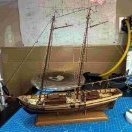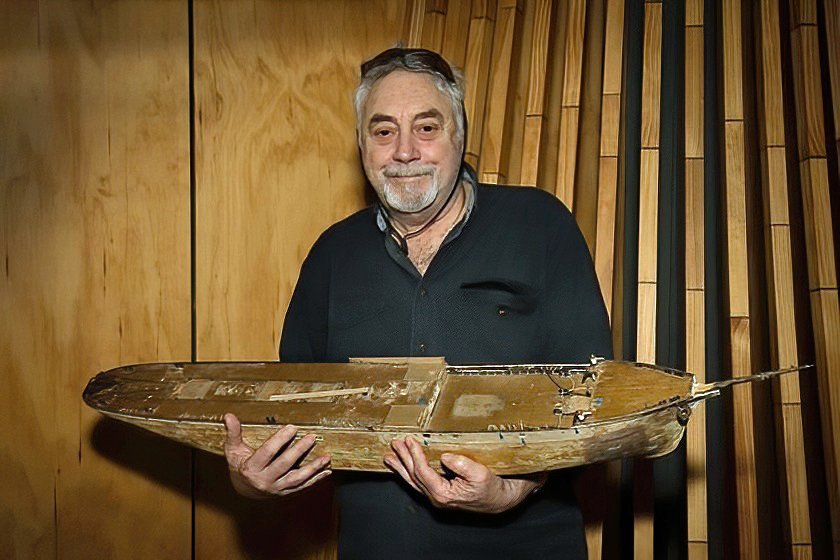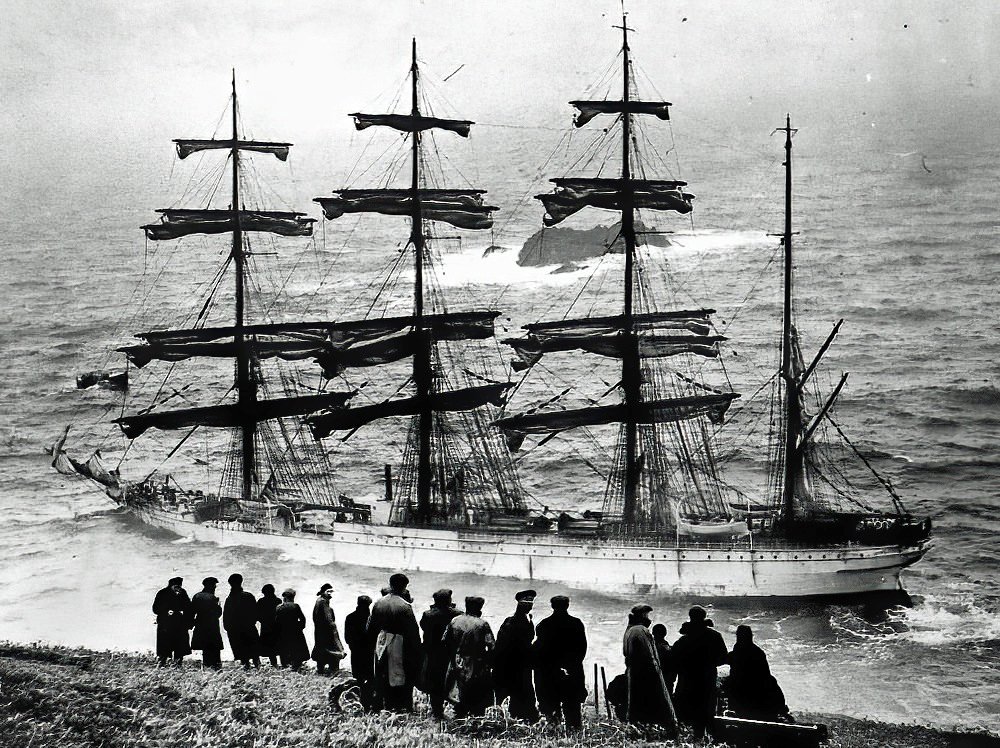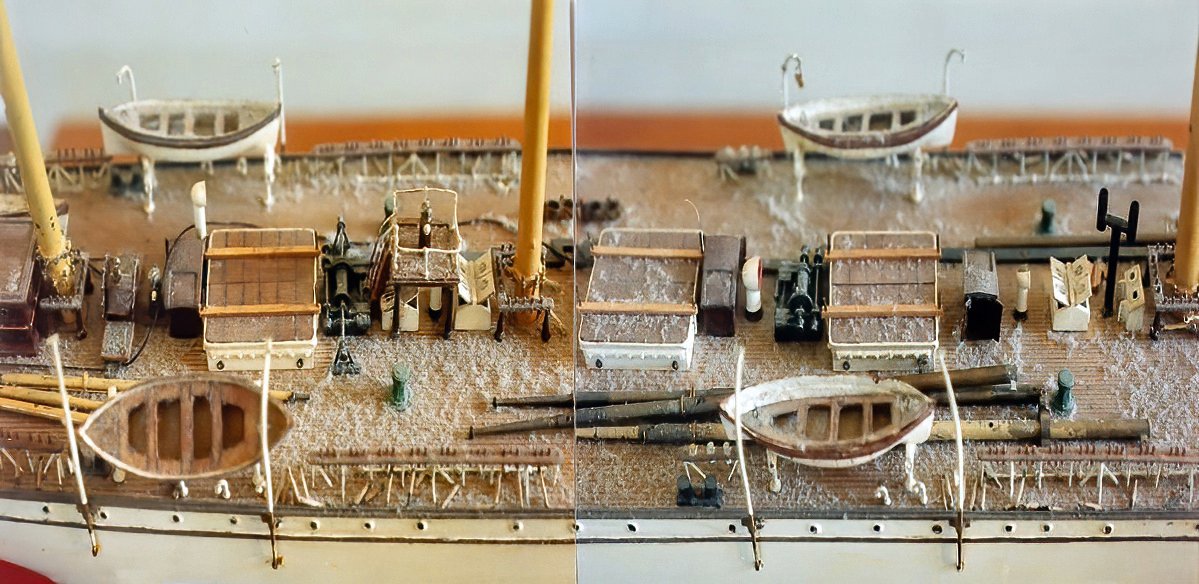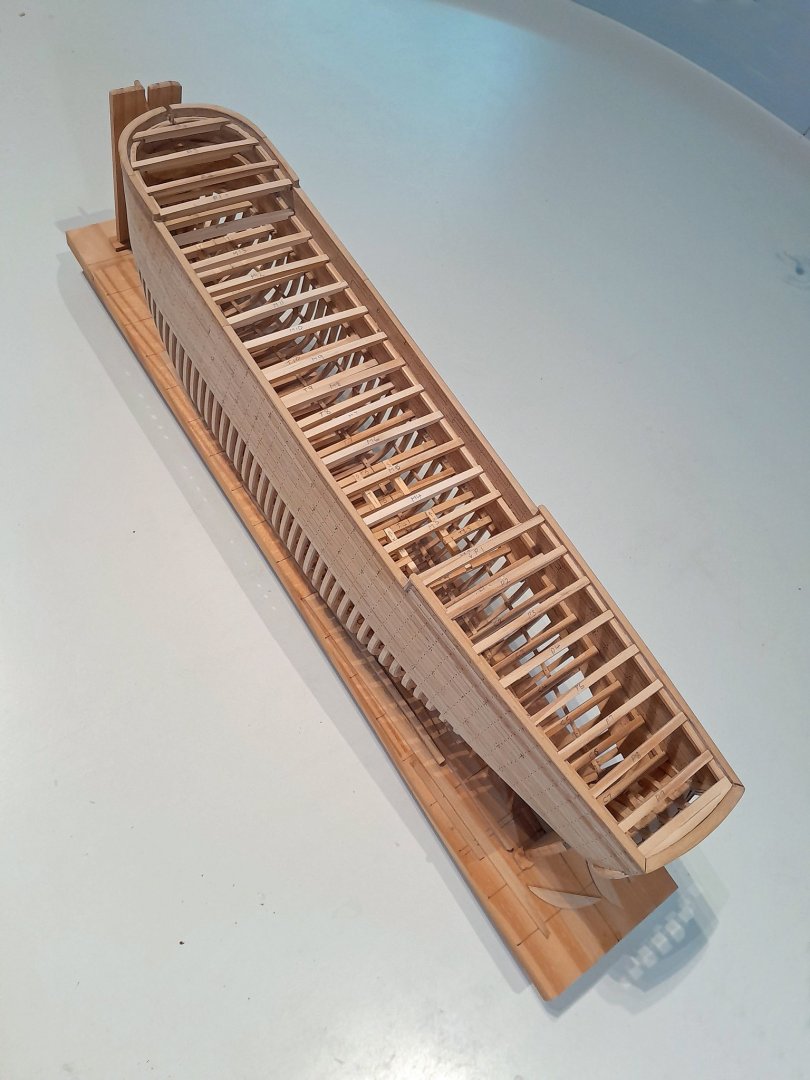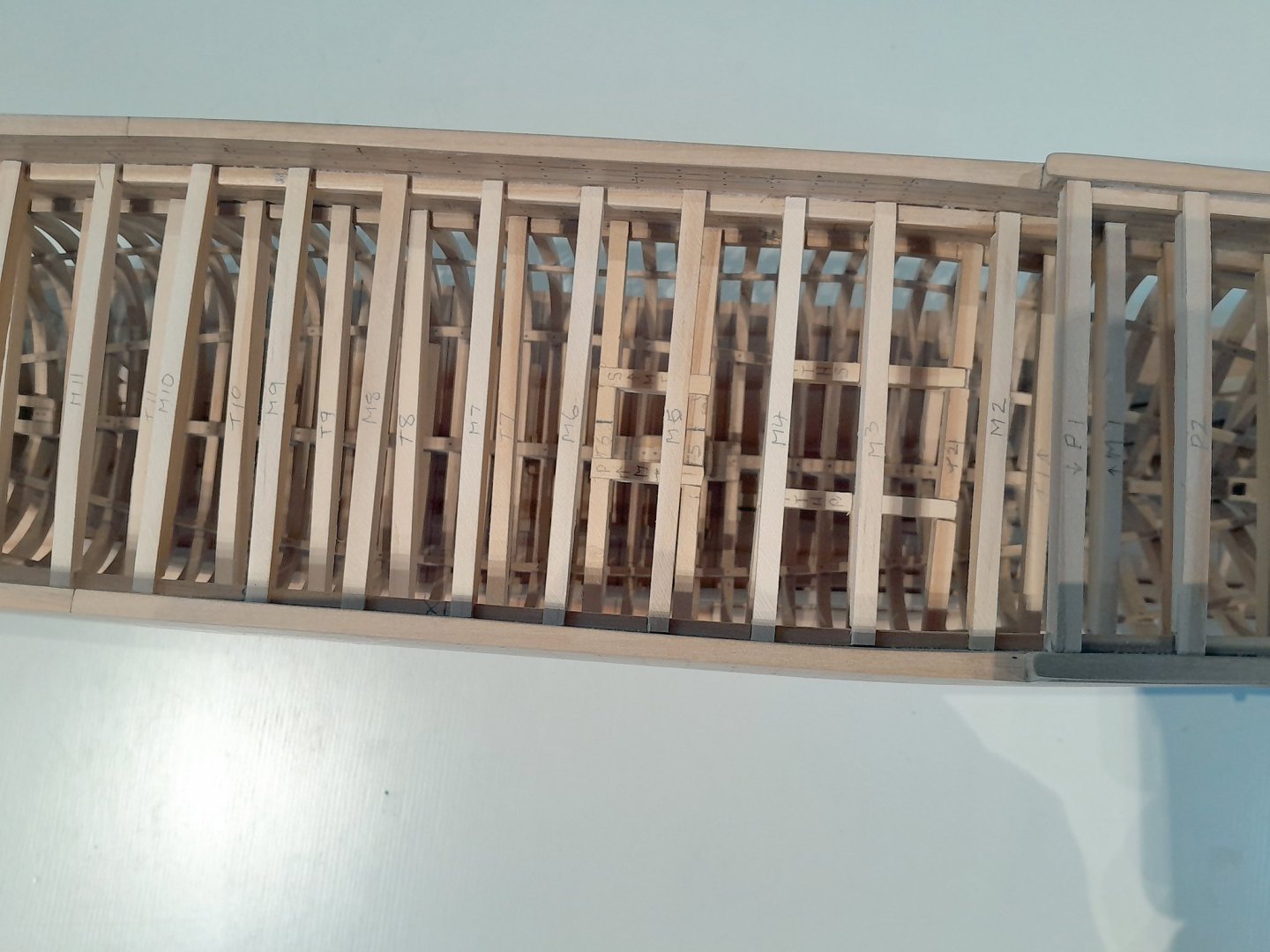-
Posts
8,206 -
Joined
-
Last visited
About Jim Lad

Profile Information
-
Gender
Male
-
Location
Sydney Australia
Recent Profile Visitors
-
 FlyingFish reacted to a post in a topic:
Herzogin Cecilie 1902 by Jim Lad - Four Masted Barque
FlyingFish reacted to a post in a topic:
Herzogin Cecilie 1902 by Jim Lad - Four Masted Barque
-
 ccoyle reacted to a post in a topic:
Herzogin Cecilie 1902 by Jim Lad - Four Masted Barque
ccoyle reacted to a post in a topic:
Herzogin Cecilie 1902 by Jim Lad - Four Masted Barque
-
 realworkingsailor reacted to a post in a topic:
Herzogin Cecilie 1902 by Jim Lad - Four Masted Barque
realworkingsailor reacted to a post in a topic:
Herzogin Cecilie 1902 by Jim Lad - Four Masted Barque
-
 GrandpaPhil reacted to a post in a topic:
Herzogin Cecilie 1902 by Jim Lad - Four Masted Barque
GrandpaPhil reacted to a post in a topic:
Herzogin Cecilie 1902 by Jim Lad - Four Masted Barque
-
 davyboy reacted to a post in a topic:
Herzogin Cecilie 1902 by Jim Lad - Four Masted Barque
davyboy reacted to a post in a topic:
Herzogin Cecilie 1902 by Jim Lad - Four Masted Barque
-
 Richard44 reacted to a post in a topic:
Herzogin Cecilie 1902 by Jim Lad - Four Masted Barque
Richard44 reacted to a post in a topic:
Herzogin Cecilie 1902 by Jim Lad - Four Masted Barque
-
 Siggi52 reacted to a post in a topic:
Herzogin Cecilie 1902 by Jim Lad - Four Masted Barque
Siggi52 reacted to a post in a topic:
Herzogin Cecilie 1902 by Jim Lad - Four Masted Barque
-
 Javelin reacted to a post in a topic:
Herzogin Cecilie 1902 by Jim Lad - Four Masted Barque
Javelin reacted to a post in a topic:
Herzogin Cecilie 1902 by Jim Lad - Four Masted Barque
-
 robdurant reacted to a post in a topic:
Herzogin Cecilie 1902 by Jim Lad - Four Masted Barque
robdurant reacted to a post in a topic:
Herzogin Cecilie 1902 by Jim Lad - Four Masted Barque
-
 JacquesCousteau reacted to a post in a topic:
Herzogin Cecilie 1902 by Jim Lad - Four Masted Barque
JacquesCousteau reacted to a post in a topic:
Herzogin Cecilie 1902 by Jim Lad - Four Masted Barque
-
A (very) long introduction to my latest project – the repair and completion of a model of the barque ‘Herzogin Cecilie’ for the Australian National Maritime Museum. I will be working on the ‘Duchess’, as she was known, in my time at the museum, while the ‘Meteor’ model will come home, to be worked on when I can. The Story Of The Ship The four masted barque ‘Herzogin Cecilie’ was built in 1902 at Bremerhaven by Rickmers Schiffbau AG as a cadet ship for the prestigious German shipping company Norddeutscher Lloyd. She was built to the very highest standards as she was designed to not only be a cadet ship for Germany’s most prestigious shipping company, but also a floating ambassadress and showpiece for the German Second Empire. She was met with great excitement and media acclaim wherever she went. Her name, Herzogin Cecilie, is from the German – Duchess Cecilie – as she was named for Herzogin (Duchess) Cecilie Auguste Marie of Mecklenburg-Schwerin, who was later to become the fiancée and wife of Crown-Prince Wilhelm of Germany. The ‘Duchess’ as she was affectionately known, engaged in the wheat and later nitrate trades to the Americas prior to World War I sometimes with salt, timber, or coke as the outward cargo. She found herself isolated in the port of Coquimbo, Chile, when war broke out. This put her in a difficult position as she would certainly have been taken as a prize of war if she had attempted to return to Europe from her neutral port. She remained at Coquimbo until June 1920 when she loaded nitrate at Celata Colosa and sailed for home. As soon as the cargo was discharged at Ostend she was handed over to the French Government as part of war reparations. The French didn’t want the ship and decided to sell her. She was finally purchased by the well-known Åland Islands owner Gustaf Erikson on the advice of his most experienced captain – Reuben de Cloux. Thus began the final, and probably most well recorded, era of the ship’s career. Erickson sent her to Australia looking for wheat cargos – cargos that could be loaded slowly and cheaply in the small Gulf ports of South Australia – cargos that could survive the long, slow voyage back to Europe without damage and without losing value. His Master of choice for the ‘Duchess’ was the same Captain de Cloux who had inspected the ship at Ostend, a man who sailed the ship hard (and somewhat expensively as he was prone to carrying canvas too long and losing sails in strong winds). She made twelve voyages to Australia in all, mostly to the South Australian Gulf ports, but also to Melbourne – usually with outward bound cargos of timber. In between her Australian voyages she also made several nitrate voyages to South America. Reuben de Cloux stayed in command of the ‘Duchess’ until the middle of 1929, when he went into retirement as a Ship Master and handed over command to his First Mate, Sven Eriksson, a distant relation of the owner, Gustaf Erikson. Gustaf was evidently not too happy about offering command of the world’s most famous and best loved sailing ship to the inexperienced Sven, however the very tight-knit network of Åland Islands family connections is thought to have forced his hand. During the period when Sven was in command the ‘Duchess’ continued to regularly win the so called ‘grain races’, with the fastest voyages home from Australia, but this may say more about the speed of the other ships involved than the ‘Duchess’ as there are several extant letters from Gustaf Erikson to his Captain reminding him to always take in sail early and not on any account to risk losing sails in strong winds! As the 1930’s advanced, luck began to run out for the ‘Duchess’. In June 1935 her donkey boiler exploded while she was discharging grain in Belfast, killing two of her crew and injuring several other people including the Second Mate. Considerable damage was also caused to the ship’s structure and rigging. Only essential repairs were carried out at Belfast, the remainder being completed in Erikson’s own shipyard in Uusakaupunki, Finland, and the ‘Duchess’ sailed on her final voyage around the world on 29th September, 1935. The bad luck continued as she sailed up the Kattegat on her way to the North Sea. She sailed straight into the stern of the German trawler ‘Rastede’, causing heavy damage to the trawler, which had to be towed into port. The ‘Duchess’ was held entirely responsible for this collision, and it later cost her owner dearly. After the collision, Sven simply continued his voyage to Australia. She sailed from Port Lincoln, in South Australia on 28th January, 1936, arriving at Falmouth, for orders, on 23rd April and on the 24th she sailed for her discharge port of Ipswich on what was to be her final, very brief, voyage. At 0350 on the 25th April, in heavy fog, she struck the Ham Stone in Soar Mill Cove and, leaking badly forward, settled to the bottom with her poop still above water. Several attempts were made to get her off, but it was not until 19th June that she was finally refloated and towed to Starehole Bay near Salcombe, where she was once more allowed to settle on the bottom. On 19th July Sven Eriksson wrote to Gustaf Erikson that several seams had burst and a bulge in the plating was noted on both sides near the mainmast. Her back was broken. The ‘Herzogin Cecilie’, the beautiful ship, was now a total loss! Her rusted remains can still be seen in the sand at Starhole Bay to this day. The Story Of The Model The model of the ‘Duchess’ has a long and complex history. Back in 2007, one of the museum’s model makers, Col Gibson, was asked by two friends if he would be interested in seeing a model of the ‘Duchess’ that was owned by their neighbour. Of course, Col said, “Yes”, and in February 2008, while he was having lunch with his friends, they introduced him to their neighbour, Vera Grainger, and her model of the ‘Duchess’. Vera’s husband Malcolm, the builder of the model, had passed away and Vera expressed an interest in donating the model to our museum however the model couldn’t be accepted into the National Collection unless complete, and thus the “Duchess” model’s long association with the Australian National Maritime Museum and the museum model makers began. Work on the model had commenced in South Africa prior to the Grainger family migrating to Australia in 1978 and had continued here up to the time of Malcolm’s retirement, however after he retired the model languished with the hull and most of the deck fittings completed, and some of the spars completed but quietly resting in a box. Vera expressed an interest in the model going to the National Maritime Museum, and wrote a letter and report to the museum concerning her gift. The model as received by the museum Nothing further happened for about two years, when Col had an unexpected visit to the model makers’ bench by then Senior Curator Dr. Stephen Gapps, who was enquiring about the fate of the model described in Vera’s letter and report. This visit finally resulted in the model being collected from Vera’s home and taken to the home workshop of another of the museum’s model makers, George Bambagiotti, as he had agreed to complete the model. George Bambagiotti holding the stripped down model Malcolm Grainger had commenced the model using plans for the ship as she was originally built, but many major and minor alterations had been made to her structure over the years, even when still under the ownership of Norddeutscher Lloyd. It was finally decided that the model should be altered and completed to show her as she was when she was engaged in the grain trade to Australia, as that was the most relevant period of her life for Australian maritime history, and the way most of the world remembered her. George started cleaning and disassembling the model while Col started on the required research. Researching such a well-known ship sounds easy – there are literally hundreds of photos of her and many books; but the books usually don’t mention alterations to the ship, and almost all the photos are undated, so trying to find out exactly what the ship looked like in early 1936 was no joke. Progress was much slower than anticipated due to many factors, sadly including George’s increasing bouts of ill health, but he was not easily put off. I remember sitting on his bed at a Rehabilitation Hospital together with Col as we tried to work out exactly how various parts of the ship actually looked at the time of her final departure from Port Lincoln. As time started to drag on, Janos Nemeth and I were asked to contribute to the build. Janos, because of his well-known expertise with small carvings, was asked to make a new figurehead for the model, and I was asked to build a new suite of boats. I was also asked to consider rigging the model, with Janos asked to assist with this if needed. The two final blows were the closure of the museum due to Covid in March of 2020 and, far worse for his colleagues and friends, the death of our dear friend George on 27th February, 2020. George’s death was a shock to all his friends at the museum, but most especially to the team working on the ‘Duchess’! While we coped with our grief at the loss of our friend, we also had to consider the future of the model, as the ever-worsening Covid pandemic with its threats of lockdowns made future actions uncertain. We also had to consider relieving Lyn Bambagiotti of the worry of having the model stored in her garage. Fortunately, the museum was able to arrange to have the model moved to the museum prior to everything locking down, but we then lost track of our lovely ‘Duchess’. She had been sitting dreaming on one of the museum store shelves while Col and I wondered what had happened to her until a recent visit to the modelmakers’ desk by one of the museum curators. Not only was the safe ‘Duchess’ in the model store, but the museum wanted the model’s status to be resolved! Things then started moving quicky. Several of the museum’s senior staff became involved, and the project was suddenly moving again. Our beautiful ‘Duchess’ is now on the upper gallery of the museum in her own secure display case and work table, and will be starting to sort our the mess on the model and the mass of possibly relevant bits and pieces that were collected from George’s home starting next Monday. Sorry for it being such a long introduction, but it's been a pretty complex story!! John
-
Hello Eric, and a warm welcome to the forum from 'Down Under'. John
-
Hello Ryan, and a warm welcome to the forum from 'Down Under'. John
-
Hello Doug, and a warm welcome to MSW from 'Down Under'. John
-
Hello, and a warm welcome to the forum from 'Down Under'. John
-
The manufacture of beams continues. All the beam 'blanks' have now been completed and I've started to work on the deck opening framing for them. Everything still, of nececcity, still unfixed, so everything needs to be carefully marked as it all goes together like a mad jigsaw puzzle. below are a couple of images of the forest of frames all roughly in place. John
-
All up to your usual standard, Chuck! John
- 796 replies
-
- speedwell
- syren speedwell
-
(and 1 more)
Tagged with:
-
Hello jay, and a warm welcome to the forum from 'Down Under'. John
-
Hello, and a warm welcome to the forum from 'Down Under'. John
-
 Jim Lad reacted to a post in a topic:
Ranger type yacht by Mark Pearse - 1:12 - SMALL
Jim Lad reacted to a post in a topic:
Ranger type yacht by Mark Pearse - 1:12 - SMALL
-
 Jim Lad reacted to a post in a topic:
TI Europe by Javelin - 1/700 - PLASTIC
Jim Lad reacted to a post in a topic:
TI Europe by Javelin - 1/700 - PLASTIC
-
The hull plating looks first class, mate! John
- 122 replies
-
- lightship
- Feuerschiff Elbe 1
-
(and 1 more)
Tagged with:
About us
Modelshipworld - Advancing Ship Modeling through Research
SSL Secured
Your security is important for us so this Website is SSL-Secured
NRG Mailing Address
Nautical Research Guild
237 South Lincoln Street
Westmont IL, 60559-1917
Model Ship World ® and the MSW logo are Registered Trademarks, and belong to the Nautical Research Guild (United States Patent and Trademark Office: No. 6,929,264 & No. 6,929,274, registered Dec. 20, 2022)
Helpful Links
About the NRG
If you enjoy building ship models that are historically accurate as well as beautiful, then The Nautical Research Guild (NRG) is just right for you.
The Guild is a non-profit educational organization whose mission is to “Advance Ship Modeling Through Research”. We provide support to our members in their efforts to raise the quality of their model ships.
The Nautical Research Guild has published our world-renowned quarterly magazine, The Nautical Research Journal, since 1955. The pages of the Journal are full of articles by accomplished ship modelers who show you how they create those exquisite details on their models, and by maritime historians who show you the correct details to build. The Journal is available in both print and digital editions. Go to the NRG web site (www.thenrg.org) to download a complimentary digital copy of the Journal. The NRG also publishes plan sets, books and compilations of back issues of the Journal and the former Ships in Scale and Model Ship Builder magazines.







